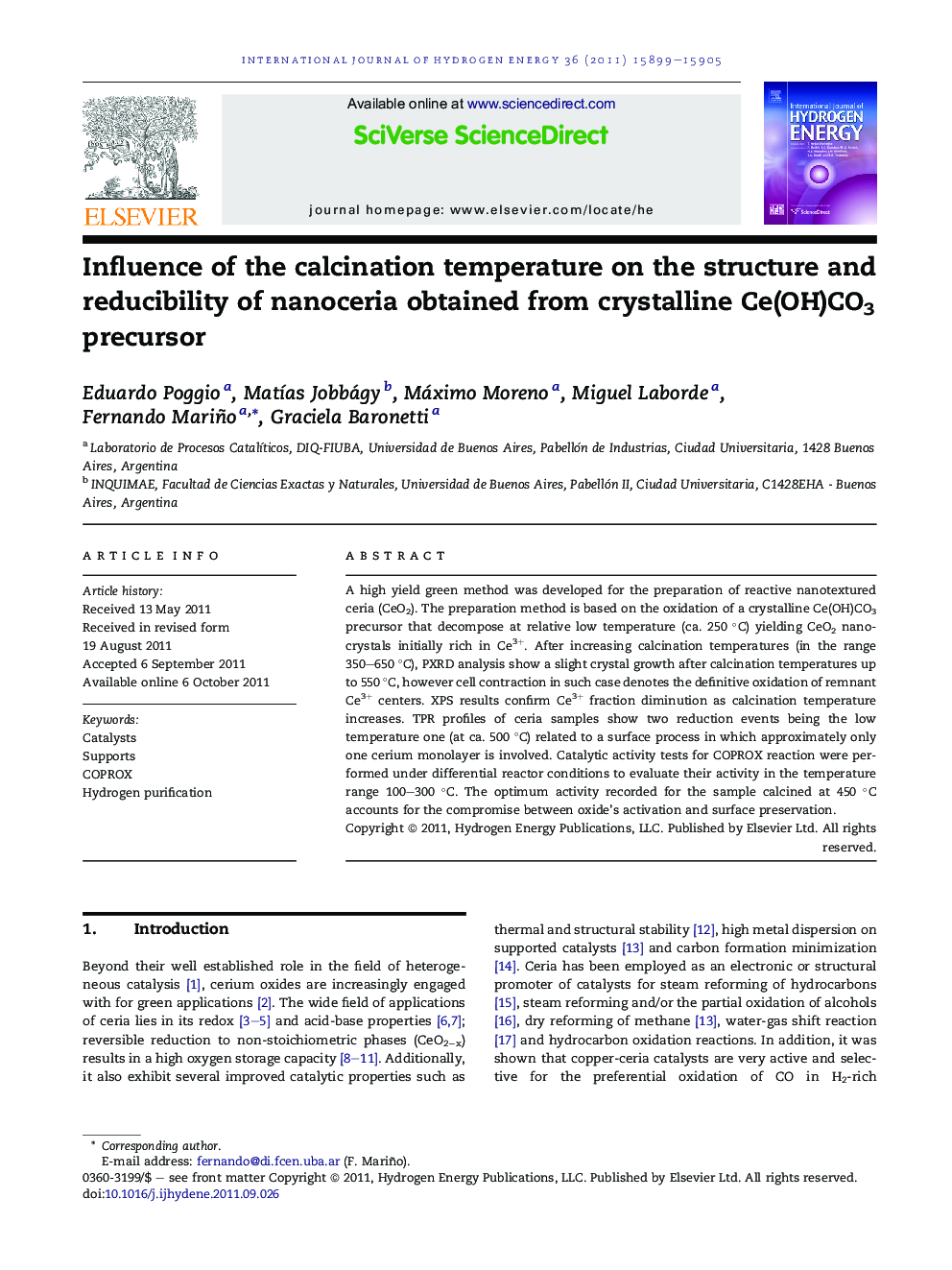| Article ID | Journal | Published Year | Pages | File Type |
|---|---|---|---|---|
| 1277387 | International Journal of Hydrogen Energy | 2011 | 7 Pages |
A high yield green method was developed for the preparation of reactive nanotextured ceria (CeO2). The preparation method is based on the oxidation of a crystalline Ce(OH)CO3 precursor that decompose at relative low temperature (ca. 250 °C) yielding CeO2 nanocrystals initially rich in Ce3+. After increasing calcination temperatures (in the range 350–650 °C), PXRD analysis show a slight crystal growth after calcination temperatures up to 550 °C, however cell contraction in such case denotes the definitive oxidation of remnant Ce3+ centers. XPS results confirm Ce3+ fraction diminution as calcination temperature increases. TPR profiles of ceria samples show two reduction events being the low temperature one (at ca. 500 °C) related to a surface process in which approximately only one cerium monolayer is involved. Catalytic activity tests for COPROX reaction were performed under differential reactor conditions to evaluate their activity in the temperature range 100–300 °C. The optimum activity recorded for the sample calcined at 450 °C accounts for the compromise between oxide’s activation and surface preservation.
► High yield green method to prepare reactive nanotextured ceria. ► Low temperature TPR event related to a surface process involving one monolayer. ► Compromise between the activation of the oxide and surface preservation.
